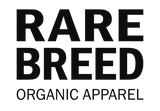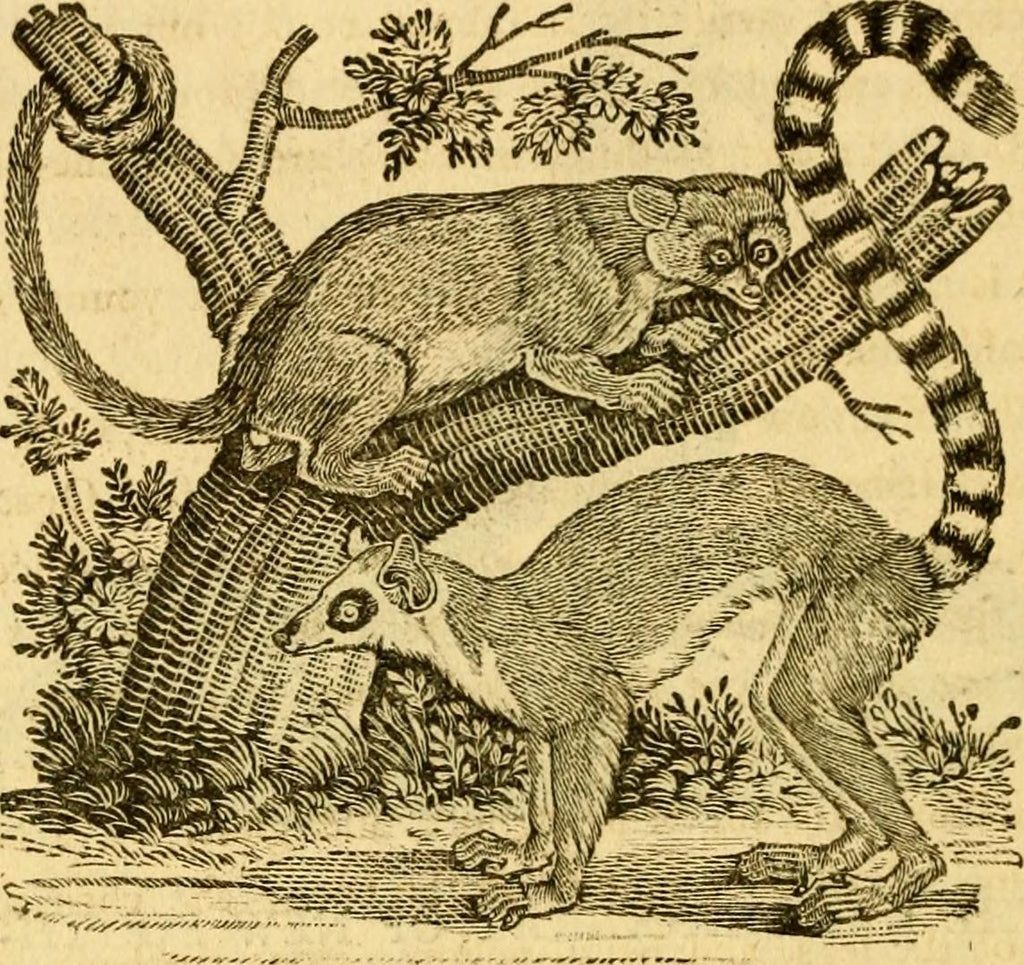This strange hyena was the starting point of whole Rare Breed project and is the reason I decided to work with historical illustrations in the first place. Up until I found this image, I was toying with the idea of making a series of T-shirt designs, but I still didn't know what they would look like. I was experimenting with various themes and drawing styles, but nothing had panned out.
Looking for inspiration, I started searching online library archives for historical images, and as soon as I saw this hyena I pretty much jumped out of my chair. This critter just seemed so secure in his stripes.

Detail of "The Striped Hyena" from A General History of Quadrupeds
I mean, look at that face.
As soon as I saw it, I knew I wanted to bring out a new iteration of the image. There was a natural synergy - giving a historical image new life, celebrating art, and doing so with a bit of sass.
As for the "Stay Weird" slogan, it just wrote itself.
After checking out the legalities and spending many (many) hours of digital wizardry to prep the image for print, I was ready to go. And boom, the Stay Weird shirt was born.
So, that's the recent history. But if we travel back about 125 years, we see that this illustration was actually part of a really important moment in the history of British art, and the history of publishing itself.

Thomas Bewick (1753 to 1828)
The hyena image first appeared in a book called A General History of Quadrupeds: The Figures Engraved on Wood, way back in 1790. The artist behind the image was a man from Northern England named Thomas Bewick, and this book was a really big deal in terms of its impact on art, publishing, and ecology.
You see, prior to this publication, most printing in Britain was done using woodcuts or steel or copper etchings. With this book, Bewick changed the game by using a technique called wood engraving which involved using very hard wood like boxwood and carving into the end grain of the wood instead of the softer side grain.
There are a bunch of reasons why this revolutionized printing. One is that the use of a very hard wood block allowed for finer details to be translated to the final print, and the blocks were hard enough to be used over and over without degrading. But more importantly, they didn't require a lot of pressure to print, so illustrations could be printed alongside text blocks in the same conventional printing press. Prior to this, illustrations had to be printed separately. The fact that images and text could be printed at the same time made a huge leap in efficiency of printing and thus reduced the cost of the finished book, making it affordable to the average British citizen rather than only the elite.
Thomas Bewick is credited with pretty much inventing and certainly popularizing wood engraving as a printing technique. It continued to be commonly used for the next 100 years. Some of Bewick's blocks are in museum archives to this day and have been used to make demonstration prints which are of the same quality as the original prints from more than a hundred years prior.

The other reason the book A General History of Quadrupeds was a really big deal is because of the effect it had on popularizing natural history (the study of plants, animals and fungi in their natural environment). In Bewick's own words, "When I first undertook my labours in natural history, my strongest motive was to lead the minds of youth to the study of that delightful pursuit." With this aim in mind, A General History of Quadrupeds was originally aimed at a young audience, but ended up being popular with adults too.
The book was hugely popular and was printed in 7 editions, totalling about 14,000 copies. As Bewick hoped, British interest in the natural history soared and continued to be popular throughout the Victorian Era with people embracing the study of plants, birds, and animals in general.
Here are some of the other wonderful wood-engraved creatures from the book:
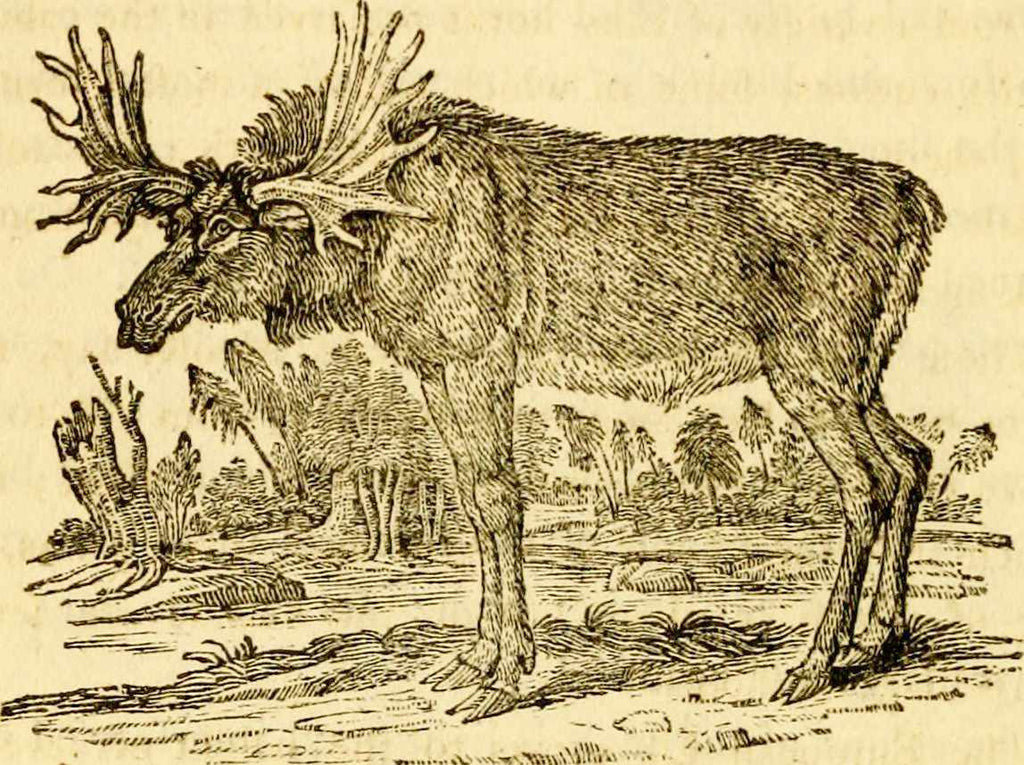
“The Elk” from A General History of Quadrupeds, 1790
The text accompanying this image noted that this animal is known as an Elk in Europe (apparently still true!) and in America as the “Moose-Deer”. I guess we dropped the "deer" part at some point here in Canada.
“The Ring-Tailed Macauco” from A General History of Quadrupeds, 1790.
This "beautiful animal about the size of a cat” is now known as a ring-tailed lemur. This is an example of the liveliness and playfulness which made Bewick's work so compelling.
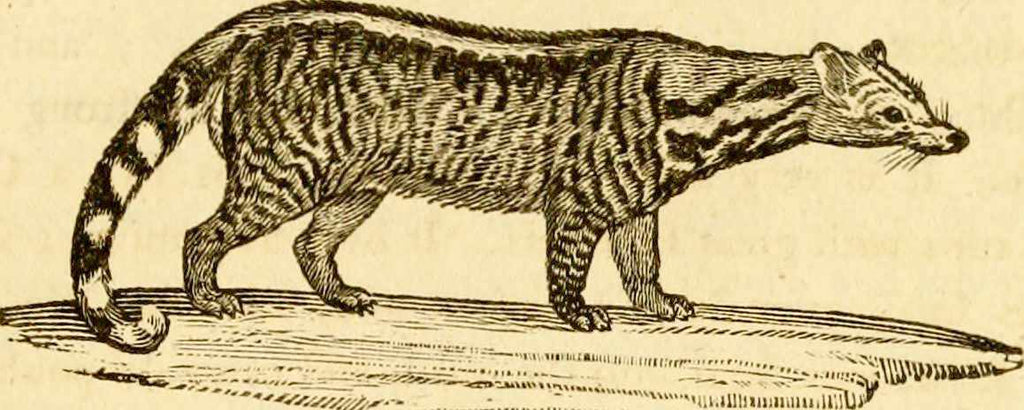
“The Zibet” from A General History of Quadrupeds, 1790.
This creature was described as being similar to a civet and having an odour that was “violent, piercing” and yet “agreeable”.
After the smashing success of A General History of Quadrupeds, Bewick and his business partner Ralph Bielby went on to create a volume focusing exclusively on birds. This book, "A History of British Birds – The Figures Engraved on Wood" was published 7 years later in 1797. The wood-engravings in this book showed an even finer touch than those in the previous volume and were praised for their accuracy and detail.

“Skylark” from A History of British Birds, 1797
With these artistic accomplishments (and many others) behind him, Bewick eventually went on to take over the printing studio from his former mentor and business partner Ralph Bielby. The studio grew to offer many different types of engraving and Bewick continued to work as an artist until the end of his years.
---------
When I chose the words "Stay Weird" for this shirt, I didn't know that the artist behind the image was an innovator that changed the world of print and ecology, but somehow it seems fitting. Although Bewick probably wouldn't have thought of himself as "weird," he did think outside the box and do things a bit differently, which is part of why his work had such a wide impact.
So, if you're a weirdo, welcome to the club. It's okay to be different...that's what keeps things interesting. ♥
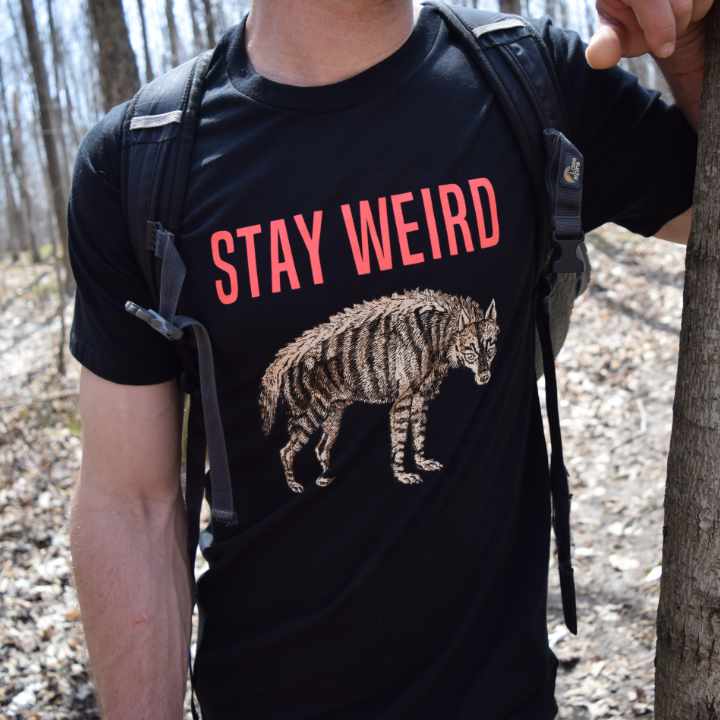
The Rare Breed "Stay Weird" tee seen in its natural habitat
References:
Bewick, Thomas & Beilby, Ralph. A General History of Quadrupeds: The Figures Engraved on Wood. Newcastle upon Tyne, S. Hodgson, R. Beilby, & T. Bewick, 1800.
Bewick, Thomas & Beilby, Ralph. The History of British Birds – The Figures Engraved on Wood. Sol. Hodgson, 1797.
https://www.biodiversitylibrary.org/item/189464#page/7/mode/1up
https://en.wikipedia.org/wiki/Wood_engraving
Introduction to Thomas Bewick https://www.youtube.com/watch?v=wZdDwf-wWcQ
Science Meets Art: Thomas Bewick's wood engravings https://www.youtube.com/watch?v=ESCd_a6I_p8
The Bewick Society http://www.bewicksociety.org/Life%20and%20Work.html
Thomas Bewick and wood-block printing | Natural History Museum https://www.youtube.com/watch?v=-2drmxm0wWo
